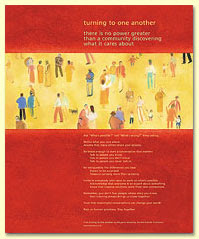In just four business days, the Community Foundation for Northern Virginia has raised $70,145 for our Haiti Earthquake Relief Fund.
Since the fall of 2005 when I first became President of the Community Foundation, we have never engaged in efforts to fundraise for a cause outside of Northern Virginia. Before we took this step, the thought certainly occurred to us that we were spending our precious donor relationship capital on a need unrelated to our service area. There was no asset development or financial gain in this for either the citizens of our region or for the Community Foundation, as we are donating every dollar we collect through the Fund to the American Red Cross for emergency relief efforts in Haiti.
So why did we do it? I think there are several good reasons:
• Because we are a center of philanthropy in Northern Virginia and are widely perceived as such.
• Because some donors are clearly moved to fund this need, now.
• Because when we asked some community leaders and faithful donors should we do this, they unanimously said yes.
• Because it just feels like the right thing to do, no matter what else is on our plate at the moment.
Just this once, for this special cause, we have vastly expanded the definition of “community” in “Community Foundation for Northern Virginia” to include the Haitian people who are suffering some of the worst deprivations and sorrows this human life can inflict.
As a community foundation leader, watching this unfold is inspiring and affirming. We feel so grateful for the response to the Haiti Earthquake Relief Fund, so appreciative of the chance to help, and so eager to learn whatever lessons this effort will teach us about our role in Northern Virginia.







